How “The Smashing Machine” Makeup Designer Kazu Hiro Transformed Dwayne Johnson into MMA Legend Mark Kerr
Veteran prosthetic makeup designer Kazu Hiro has garnered two Oscars for his outstanding work: one for transforming actor Gary Oldman into Winston Churchill for Darkest Hour, and the other for transforming Charlize Theron into Megyn Kelly for Bombshell. More recently, he was nominated for sculpting Bradley Cooper’s visage as legendary composer Leonard Bernstein in Maestro.
But for writer/director Benny Safdie’s biographical drama about the beginnings of mixed martial arts (“MMA”) and what would eventually become the UFC, Hiro’s team of approximately 20 makeup artists certainly had their work cut out for them. “The fighting scenes really added different elements because the prosthetics have to last for a long time. So, this project required a different approach. We can’t do just one makeup a day; it had to go through stages. For all the added elements like swollen eyes or a broken nose, I made separate pieces that we could add on to the basic look.”
Safdie’s solo directorial debut subverts the usual sports drama clichés to deliver a grounded look at the early days of the sport through the lens of real-life two-time UFC Heavyweight Tournament Champion, Mark Kerr (Dwayne Johnson, in a stunningly raw and vulnerable performance). As opposed to the formulaic rise-and-fall tale of ambition and destruction, a significant part of the story focuses on his tumultuous relationship with his girlfriend, Dawn Staples (Emily Blunt), as they cope with his addiction to painkillers and her need for attention. Throughout the rage, pain, and redemption, Mark is supported by his closest friend and training partner, Mark Coleman (an impressive performance by real-life MMA fighter Ryan Bader).
Winner of the Silver Lion at last month’s Venice International Film Festival, The Smashing Machine took Johnson and Safdie six years to bring to the screen. Aside from delivering the expected stomach-churning brutality in the octagon, the film may surprise audiences with its music-forward approach. Hiro recently talked to The Credits ahead of the movie’s release.
[This interview has been edited for clarity.]
This film takes a subversive approach to the sports and addiction-recovery drama template. What qualities about Mark Kerr did you want to convey through the prosthetics and makeup in service of this unique approach?
I really enjoy working on biopics, portraits, and character makeup; I’m more interested in the character as a human being. So, I focused on the contrast between his identity as a fighter and as a person, the gap between the MMA fighter and Mark—the gentle and quiet person. Dwayne is also a very nice, quiet, and gentle person. I wanted to reflect on the contrast between aggressiveness and gentleness in his look.
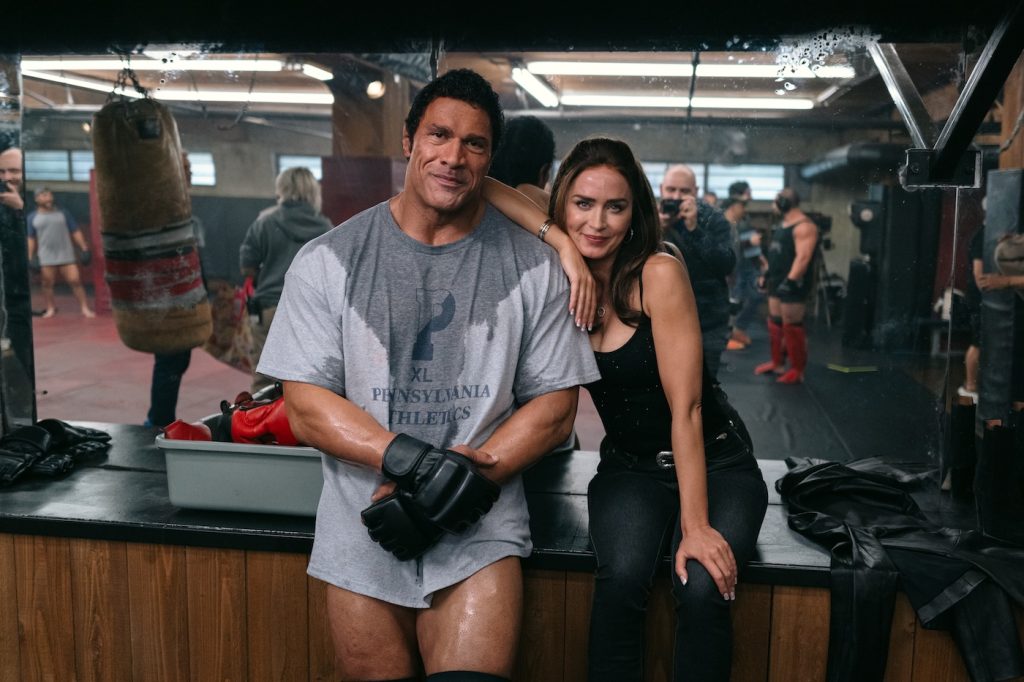
What were some of the early conversations when you started molding Mark’s look?
We started with the life cast, a 3D scan of Dwayne. When Benny and I first talked about how close he wanted Dwayne to look like Mark, there wasn’t a clear answer. So, I made a full version that looked very much like Mark, and a subtle version with an essence of both men. We chose the subtle version, which made sense because Benny wanted Dwayne to still be there while making him look like Mark. There is also a practical reason for this — since he will be sweating a lot in all the fighting scenes, if I cover up the whole face, the sweat has nowhere to go. If the actor sweats a lot, it starts to build up between the actor’s skin and the prosthetic, and it will bubble up. So, I avoided areas where he tends to sweat more and focused on the areas that reflect Mark without covering too much.
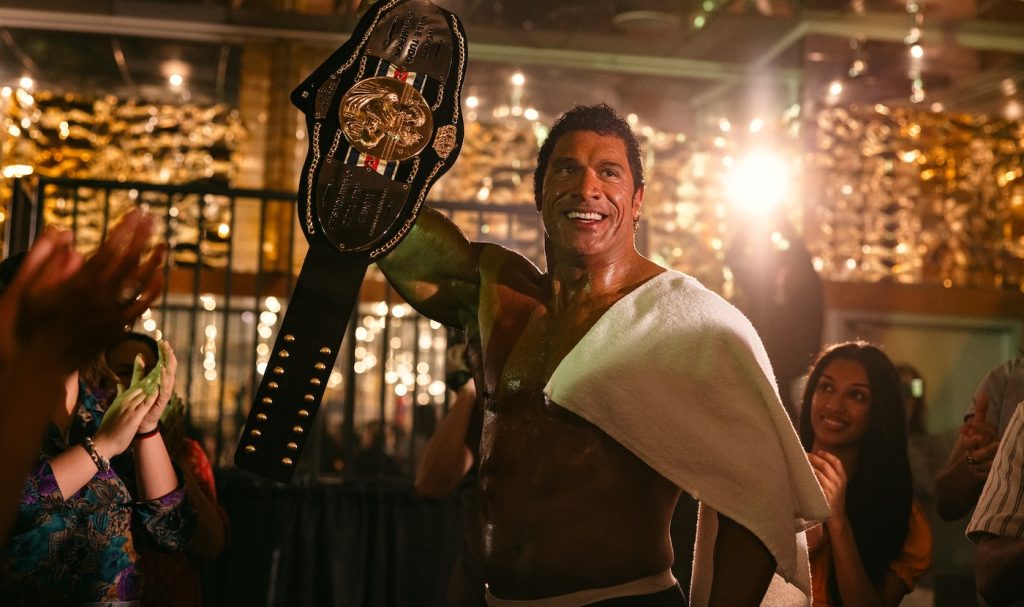
What were some of the features that were most different when you compare Dwayne and Mark?
To make Dwayne’s face look like Mark’s, I focused on the brow bone, eyebrow shape, and nose, which are all quite different – Mark has a prominent brow bone and a cauliflower ear. Changing the hairstyle and hairline also changes the proportion of his face. There’s a big difference with their eyes — Mark has heavy eyebrows with the brow bone hanging above the eyes, and Dwayne’s are more open, you can see his eyes clearly. So, I had to bring down Dwayne’s brow bone and add a fake eyebrow. Since he has to do a lot of emotional acting in the film, I made a chamber inside the prosthetic eyelid that goes over his eyes so that he can blink naturally. Without this in between his eyelid and brow bone, or if I glued down on his eyelid, it would prevent him from blinking naturally. So, there’s space inside that piece to allow him to blink more freely and do lots of different expressions. The eyelid muscle is not as strong as the rest of the face, and it has very delicate skin, so we had to figure out how to make it movable.
The fights are as brutal as expected as Mark moves through the championship. How do you maintain that continuity as the injuries escalate for each character?
During and after a fight, there are swelling, bruises, and cuts that keep adding up. This kind of filming is always tricky, because we can’t do one makeup a day, it has to go through stages. For all the added elements, like swollen eyes or a broken nose, I made separate pieces that we could add on to the original look.
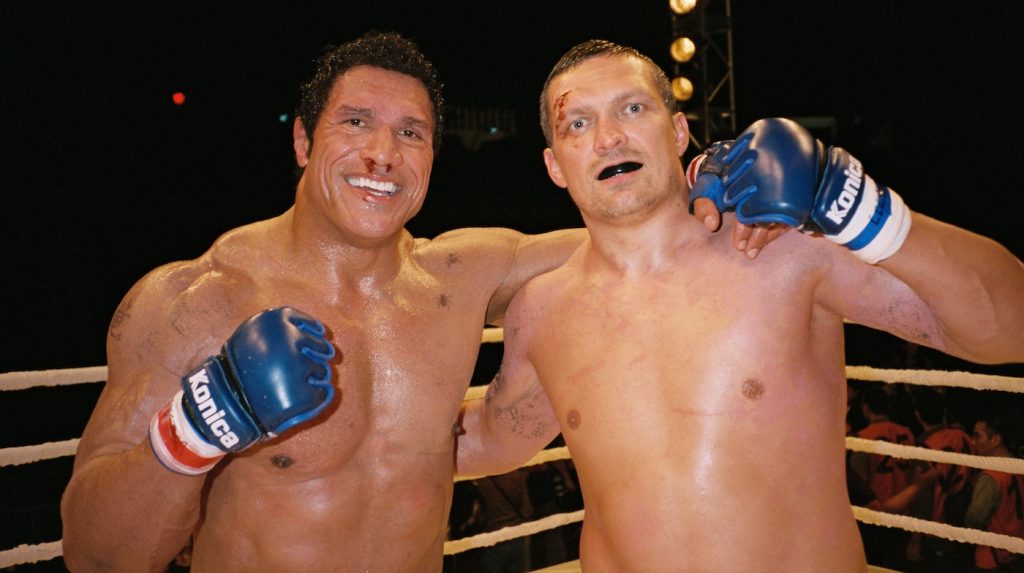
This is on top of the three hours that Dwayne spent in the makeup chair every day before shooting even begins, right?
It really depends on the day. On days when he had close-ups, more time was needed because he has numerous body tattoos, so we had to cover them up and then add Mark’s tattoos on top of them. There’s a limit to how many people can be around him at one time during makeup, so we started with prosthetics on the face, and once that’s almost done, the other makeup artist came in to start the body makeup. For example, in the scene where Mark goes to the barber to shave his head, we started to film with his “normal” look. Once he’s at the barber, we added the bald cap with hair on it. Then, when we shot the scene after he gets shaved, we removed the bald cap.
Can you discuss blending the prosthetics with the wig and collaborating with the hair team?
I designed Dwayne’s wig, and our wig maker, Diana Choi, created it. Initially, I had a makeup artist on my team to work on the wig as well, but they had too much going on, so [hair department head] Mia Neal took care of all the different looks throughout filming.
Did your team work on Dwayne, Emily, and all the fighters?
No, only Dwayne. Björn Rehbein is Dwayne’s personal makeup artist who took care of most of the tattoo covering and any “normal” makeup, and Emily’s as well. Dwayne’s barber, Rachel Solow, maintained his skin conditioning and shaving every day. And prosthetic makeup artist Glen Griffin did most of the application on set.
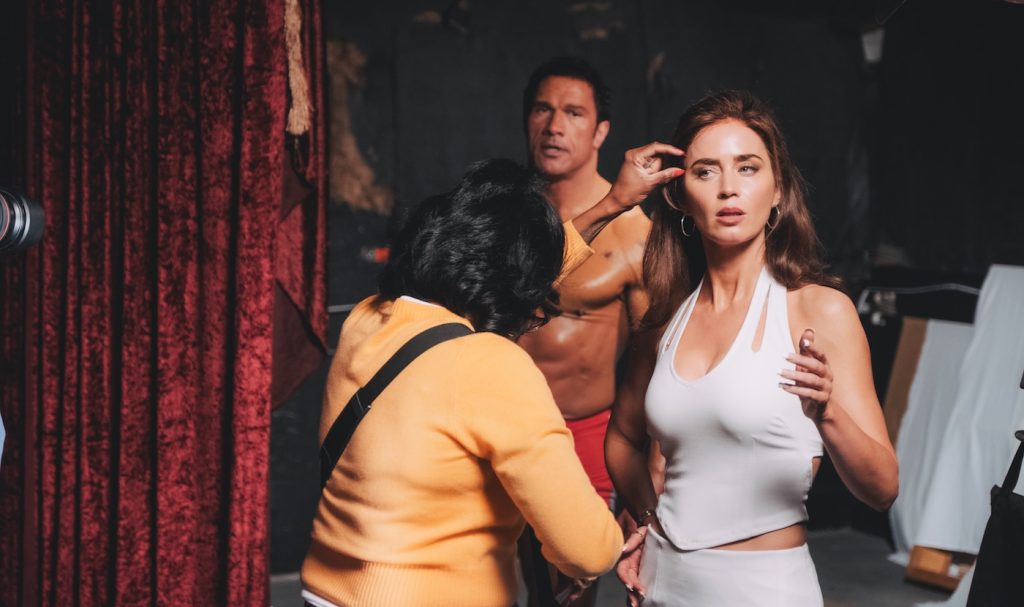
How long did it take to test and finalize the look for Mark?
About a month and a half — it wasn’t the biggest budget film, so we had a pretty fast and practical process. We did two tests in Los Angeles before filming in Vancouver. I spent two months designing before the rest of the makeup team joined us on set.
With all the grappling, punching, kicking, and sweating in the octagon, how did your team make the makeup and prosthetic pieces last as long as possible?
We used three or four different kinds of medical glue. Each person has a different chemistry in their sweat — there is always salt, but some people have more oil than others, and oil dissolves the glue. If someone drinks a lot of alcohol the day before, that will come out in the sweat too. After a few days, we start to learn the chemistry of each actor’s sweat and switch around the glue, and it also depends on the area. We have to protect their skin too, especially since Dwayne was pretty much in makeup every day. We try to make it last as long as possible, but if we hurt his skin, then we can’t shoot for a few days.
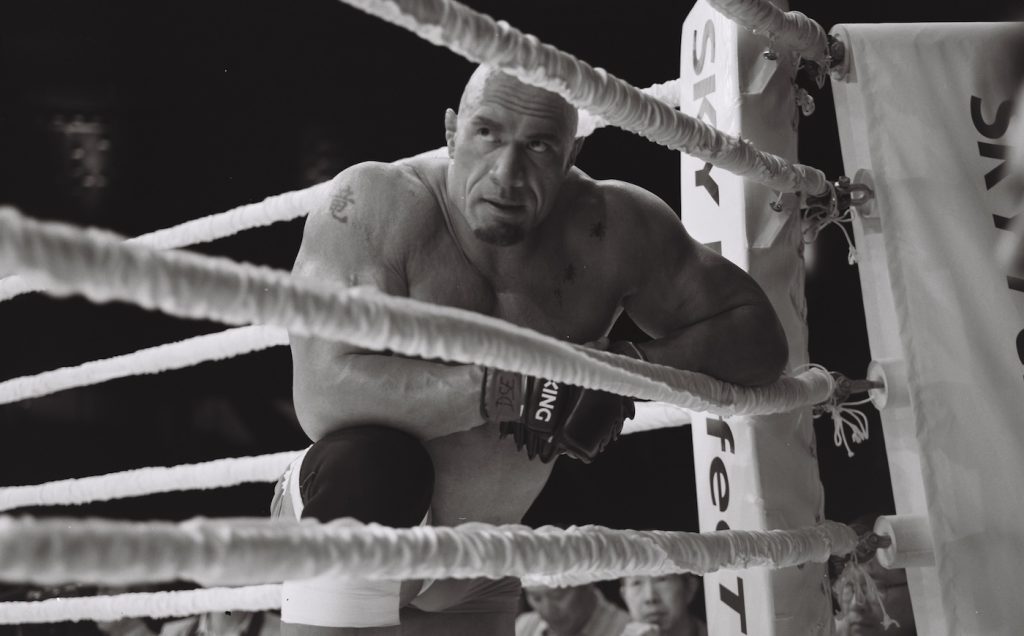
What are some of the scenes that you would like to highlight? Did anything surprise you once you saw the finished film?
Even though it’s about wrestling, Mark’s story is really about love, compassion, empathy, and the human relationship — that’s the most important part. I really like how Benny used the music, and I enjoyed each of the characters. Most of the fighters are not actors; they’re real fighters, so the authenticity of the whole film was amazing.
The Smashing Machine is playing in theaters nationwide.
Featured image: Dwayne Johnson in “The Smashing Machine.” Courtesy A24

